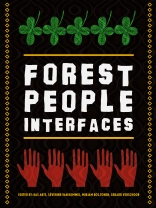Inhaltsverzeichnis
Preface.- 1. Forest-people interfaces: from local creativity to global concerns.- 1.1. Introduction.- 1.2. Non-timber forest products and agroforestry.- 1.3. Community-based natural resource management.- 1.4. Biocultural diversity.- 1.5. Forest governance.- 1.6. Conclusion.- References.- Part I. Non-timber forest products and agroforestry.- 2. Non-timber forest product extraction as a productive bricolage Process.- Abstract.- 2.1. Introduction.- 2.2. Non-timber forest products: general characteristics and their role in peoples’ livelihoods.- 2.3. NTFP production as productive bricolage.- 2.4. The need to consider levels of scale: adding a political ecological perspective.- 2.5. Conclusion.- Acknowledgements.- References.- 3. Gum and resin-producing species in the drylands of Ethiopia: productive bricolage footprints on the landscape.- Abstract.- 3.1. Introduction.- 3.2. Dry forests in Ethiopia.- 3.3. Gum and resin in the dryland livelihoods of Ethiopia: livelihood strategies and dynamics.- 3.4. Status of the woodlands dominated by Boswellia species in the drylands of Ethiopia.- 3.5. Understanding the management status of gum and resin-producing woodlands.- 3.6. Discussion: productive bricolage and landscape management.- 3.7. Conclusion.- References.- 4. Land-use dynamics in enset-based agroforestry homegardens in Ethiopia.- Abstract.- 4.1. Introduction.- 4.2. Structure and composition of enset-coffee agroforestry homegardens.- 4.3. The central role of enset in homegardens and livelihoods.- 4.4. Dynamics in enset area composition.- 4.5. Implications of the dynamics in enset-coffee agroforestry homegardens for agricultural sustainability.- 4.6. Conclusions.- References.- 5. Woodfuel and producers’ livelihoods in the Congo Basin.- Abstract.- 5.1. Introduction.- 5.2. Theoretical outlook.- 5.3.Methodology.- 5.4. Results.- 5.5. Discussion.- 5.6. Conclusion.- Acknowledgements.- References.- Part II. Community-based natural resource management.- 6. Discourses of community forestry.- Abstract.- 6.1. Introduction.- 6.2. Environmental discourses.- 6.3. Discourses of community forestry.- 6.4. Assessing the CF discourse.- 6.5. Community forestry discourses: quo vadis?.- 6.6. Conclusions.- References.- 7. Conservancies in Namibia: a discourse in action.- Abstract.- 7.1. Introduction.- 7.2. The empirical setting.- 7.3. The theoretical setting: analysing conservancies.- 7.4. The community question: conservancy dynamics.- 7.5. New regimes of power?.- 7.6. Conclusions.- References.- 8. REDD+: what’s in it for community forest management?.- Abstract.- 8.1. Introduction.- 8.2. The nature of international REDD+ policy.- 8.3. The prominence of CFM in national REDD+ plans.- 8.4. The niche of CFM within REDD+.- 8.5. The commercial value of the carbon services delivered by CFM.- 8.6. Organising payments for communities.- 8.7. The dangers of recentralisation and the establishment of safeguards and rights.- 8.8. Regulation, markets or negotiation?.- References.- 9. Learning from the actors: the rise and demise of a CBNRM initiative in Mexico.- Abstract.- 9.1. Introduction.- 9.2. Constructing the organization.- 9.3. Putting the CBNRM initiative into practice.- 9.4. Demise.- 9.5. Conclusion.- References.- Part III. Biocultural diversity.- 10. Perceptions and values of local landscapes: implications for the conservation of biocultural diversity and intangible heritage.- Abstract.- 10.1. Introduction.- 10.2. Methods.- 10.3. Results.- 10.4. Discussion.- 10.5. Conclusion and implications.- Acknowledgments.- References.- 11. Biocultural diversity in the Netherlands: from ecologically noble savages towards bioculturalcreatives.- Abstract.- 11.1. Introduction.- 11.2. The cultural roots of biodiversity conservation.- 11.3. From ‘ecologically nobles savages’ to ‘biocultural creatives’.- 11.4. Our conceptual approach to biocultural creativity.- 11.5. How Dutch citizens interact with nature.- 11.6. Biocultural creatives.- 11.7. The future of biocultural diversity in the Netherlands.- References.- 12. ‘Diversity (still) at stake’: a farmers’ perspective on biodiversity
and conservation in Western Mexico.- Abstract.- 12.1. Introduction.- 12.2. Diving into theory.- 12.3. Research design.- 12.4. Farmers’ classification of the landscape.- 12.5. Succession management and landscape patchiness.- 12.6. The organisation of time and space.- 12.7. Transformations in resource diversity.- 12.8. Reorganisation of time and space.- 12.9. Variation in resource diversity transformations.- 12.10. Discussion and conclusion.- References.- 13. Governing biocultural diversity in mosaic landscapes.- Abstract.- 13.1. From managing biocultural diversity to governing mosaic landscapes.- 13.2. Biocultural diversity, mosaic landscapes and governance defined.- 13.3. The spatial dimension of governance: governance of place.- 13.4. Enhancing landscape governance: a learning approach.- 13.5. Landscape learning in practice.- 13.6. Conclusion.- References.- 14. The (onto)politics of classifying biocultural diversity: a tale of chaos, order and control.- Abstract.- 14.1. Introduction: biocultural diversity as an ordering device.- 14.2. Classification systems, boundaries and performativity.- 14.3. Biocultural diversity in Wiersum’s research.- 14.4. Classifications in research on biocultural diversity.- 14.5. The (onto)politics of classifying biocultural diversity.- 14.6. Performativity: the social and material implications ofclassifying
biocultural diversity.- References.- Part IV. Forest governance.- 15. Forest governance: a state of the art review.- Abstract.- 15.1. Introduction.- 15.2. Governance.- 15.3. Forest governance.- 15.4. Forest governmentality.- 15.5. Triple G.- 15.6. Conclusion.- Acknowledgement.- References.- 16. Exploring forest governance in Tanzania.- Abstract.- 16.1. Introduction.- 16.2. Background information.- 16.3. Contemporary forest governance in Tanzania.- 16.4. Impact of new forest governance on forest resources and livelihoods of local people.- 16.5. Conclusion.- References.- 17. Institutional bricolage in community forestry: an agenda for future research.- Abstract.- 17.1. Introduction.- 17.2. Institutional thinking in community-based forest management.- 17.3. Institutional bricolage.- 17.4. Key elements of bricolage.- 17.5. Practices of institutional bricolage.- 17.6. Conclusions.- References.- 18. Forest market governance: exploring a practice-based approach.- Abstract.- 18.1. Introduction.- 18.2. Setting the stage: markets from a disciplinary view.- 18.3. Towards a new approach: markets as practices.- 18.4. Implications of researching markets as practices.- 18.5. Discussion and conclusion.- References.










